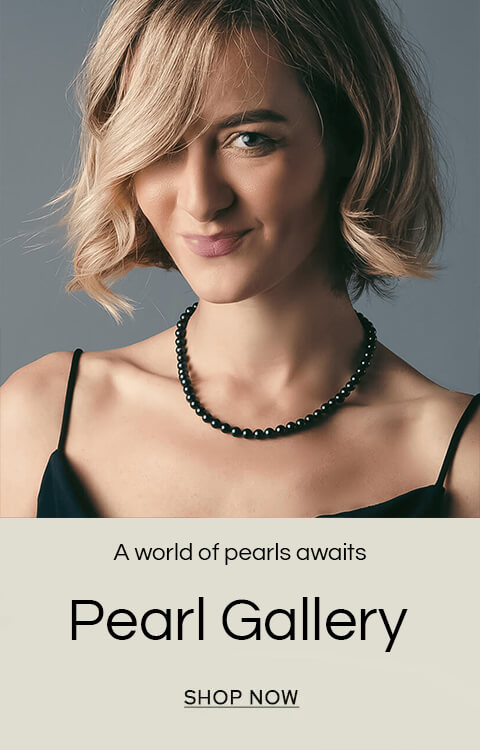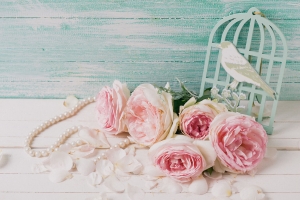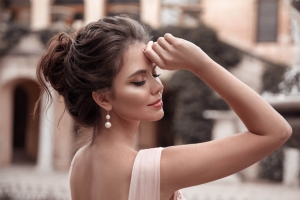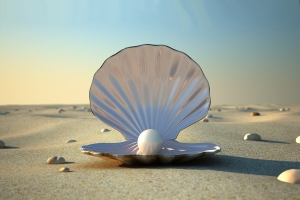Freshwater Pearls: Unveiling the Charm of Nature's Underwater Gems
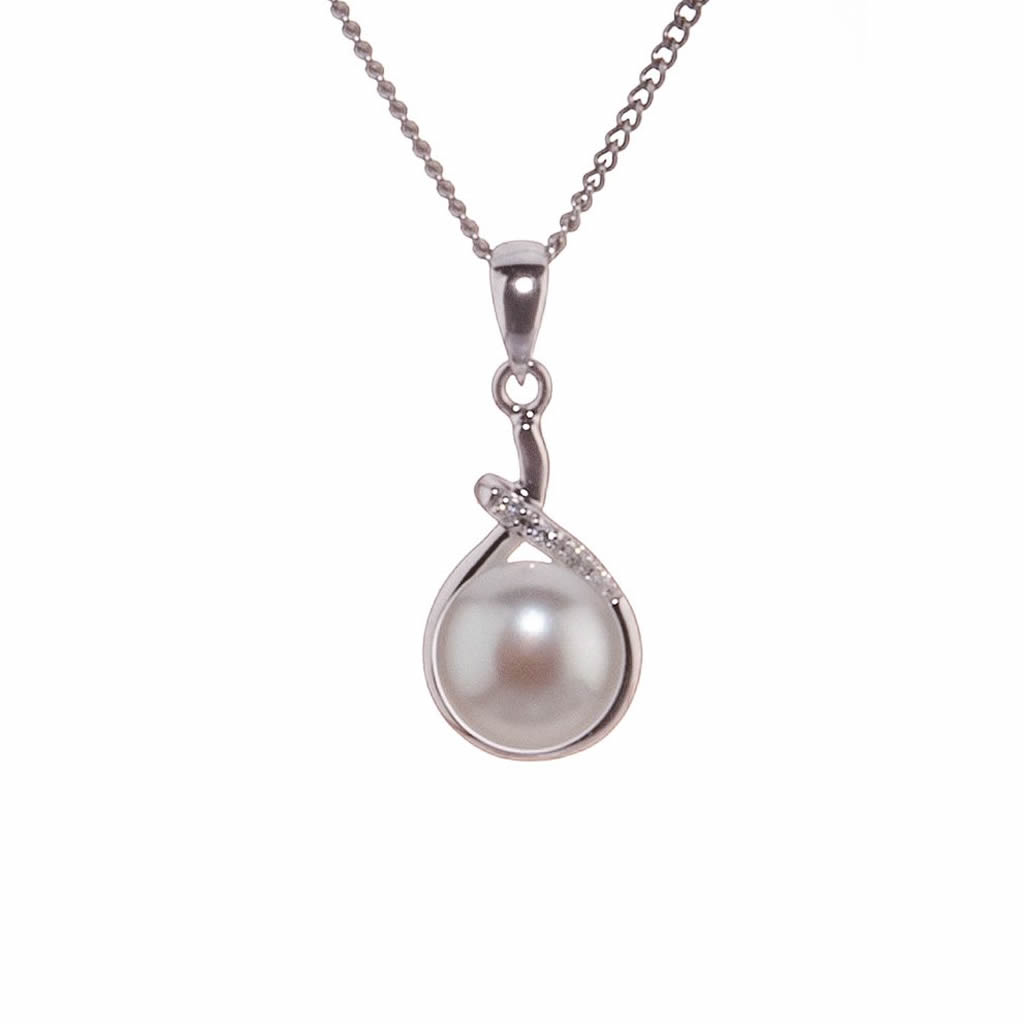
Freshwater pearls are some of nature's most enchanting treasures. Their lustrous allure and versatile appeal have captivated the hearts of jewellery enthusiasts for centuries. Sourced from freshwater mussels that inhabit rivers, lakes, and ponds, these pearls are celebrated for their diverse shapes, colours, and sizes. In this blog, we will take a deep dive into the world of freshwater pearls, exploring their formation, harvesting, characteristics, and how to choose the perfect piece for your collection.
Formation and Harvesting:
The Formation Process
Freshwater pearls are formed when a foreign particle enters a freshwater mussel. As a natural defence mechanism, the mussel secretes layers of nacre around the irritant to form a pearl. Unlike saltwater pearls, which typically rely on a bead nucleus, freshwater pearls are predominantly composed of solid nacre. This gives them their signature lustrous appearance and makes them more durable.
Harvesting Techniques
Pearl farmers have cultivated freshwater pearls since ancient times. Today, China is the largest producer, with the majority of farms located around the Triangle of Pearl River in the provinces of Zhejiang, Jiangsu, and Anhui. Farmers introduce a small piece of mantle tissue from a donor mussel into the host mussel, which triggers the nacre secretion process. This technique, known as nucleation, allows farmers to control the size and shape of the pearls to some extent. The cultivation period usually ranges from 2 to 7 years, depending on the desired size.
Characteristics of Freshwater Pearls:
Shapes and Sizes
Freshwater pearls come in various shapes, including round, near-round, oval, button, drop, and baroque. Round pearls are the rarest and most sought-after, while baroque pearls offer unique, irregular forms that are perfect for artistic pearl jewellery designs. Freshwater pearls also vary in size, ranging from tiny seed pearls at 2mm to larger statement pieces measuring 15mm or more.
Colours
The natural colours of freshwater pearls can range from classic white and cream to pastel shades of pink, lavender, and peach. Some pearls also exhibit an iridescent effect known as orient,
which adds to their visual appeal. Pearl farmers can influence the colour by introducing donor mantle tissue from mussels with specific colour traits, or through post-harvest treatments such as dyeing and irradiation.
Lustre
The lustre of a pearl refers to the way light interacts with its surface. Freshwater pearls are known for their soft, satiny lustre, which can vary from subtle to high. The thickness and quality of the nacre layers greatly influence the lustre. Generally, the thicker the nacre, the more lustrous and valuable the pearl.
Choosing the Perfect Freshwater Pearl Jewellery:
Determine Your Budget
Freshwater pearls are more affordable than their saltwater counterparts, making them an excellent choice for first-time buyers and collectors. Prices can range from under £50 for a simple pair of earrings to thousands of pounds for a high-quality necklace.
Consider the Occasion
Choose pearl jewellery that suits the occasion, whether it's a gift, a statement piece for a special event, or a versatile addition to your everyday wardrobe. Classic white pearls are timeless and elegant, while coloured pearls offer a contemporary twist.
Inspect the Quality
Examine the pearl's surface for imperfections, as fewer blemishes signify higher quality. Lustre, size, and colour are also crucial factors to consider. Ensure that the pearls are well-matched in terms of size, shape, and colour for a cohesive and harmonious appearance in multi-pearl jewellery.
4. Choose the Right Style
Freshwater pearls are incredibly versatile and can be found in various types of jewellery, including necklaces, bracelets, earrings, and rings. Consider your personal style and preferences when selecting a piece.
Necklaces: Freshwater pearl necklaces can be single or multi-strand, choker, matinee, or opera length. A simple strand of pearls is a timeless classic, while a baroque pearl necklace offers a bold, modern look.
Bracelets: Pearl bracelets are available in bangle, charm, or stretch styles. A delicate single-strand pearl bracelet adds a touch of sophistication, while a chunky multi-strand design makes a statement.
Earrings: Freshwater pearl earrings can be studs, drops, or hoops. Pearl studs are an elegant choice for everyday wear or special occasions, while drop earrings or hoops offer a more contemporary appeal.
Rings: Pearl rings range from simple solitaires to intricate designs with gemstone accents. A solitaire pearl ring is a timeless piece, while a halo or vintage-inspired design can add a touch of glamour.
Caring for Your Freshwater Pearl Jewellery
Proper care is essential to maintain the beauty and longevity of your freshwater pearls. Follow these guidelines to keep your pearls looking their best:
- Clean pearls gently with a soft, damp cloth after wearing to remove any oils, dirt, or perspiration. Avoid using chemicals or abrasive materials that can damage the pearls' surface.
- Store your pearl jewellery separately from other pieces to prevent scratching. Use a soft pouch or jewellery box with compartments.
- Put on your pearls after applying makeup, perfume, or hair products, as these substances can damage the nacre over time.
- Remove your pearls before engaging in activities that may expose them to water, chemicals, or physical stress, such as swimming, cleaning, or sports.
Freshwater pearls offer a delightful array of options for jewellery enthusiasts, with their unique shapes, colours, and sizes. By understanding their formation, characteristics, and how to choose the perfect piece, you can confidently invest in a piece of freshwater pearl jewellery that will bring you joy for years to come. From timeless classics to contemporary designs, freshwater pearls are truly nature's underwater gems that add a touch of elegance to any outfit.

